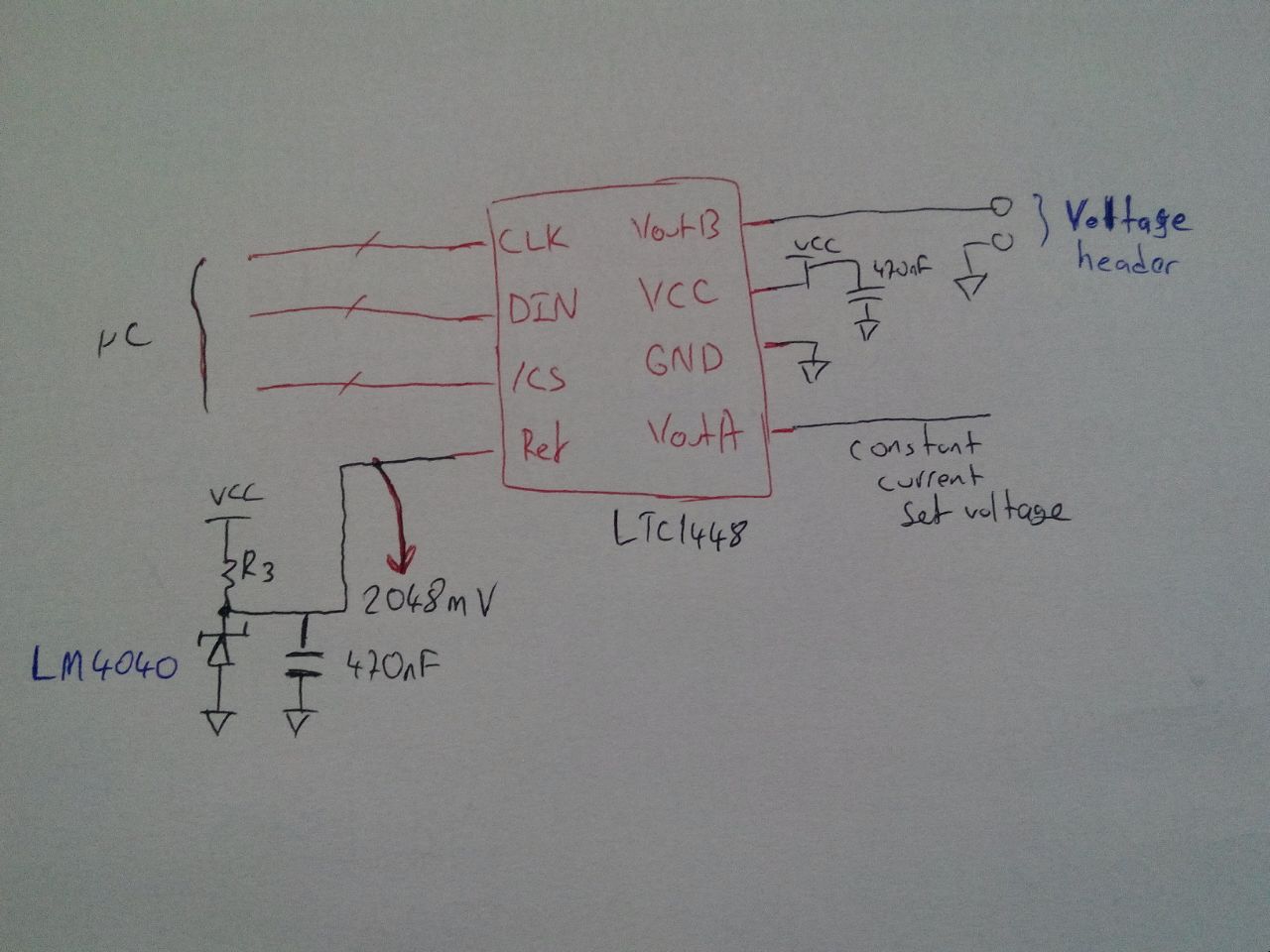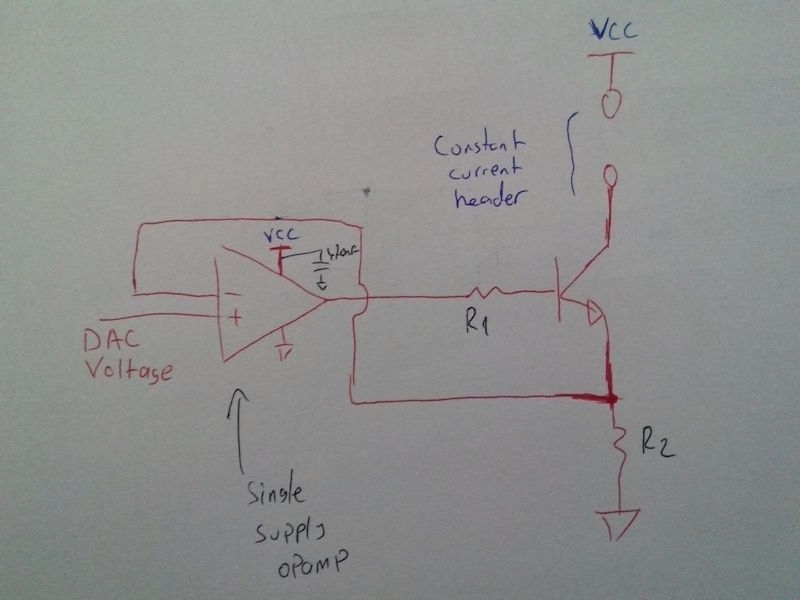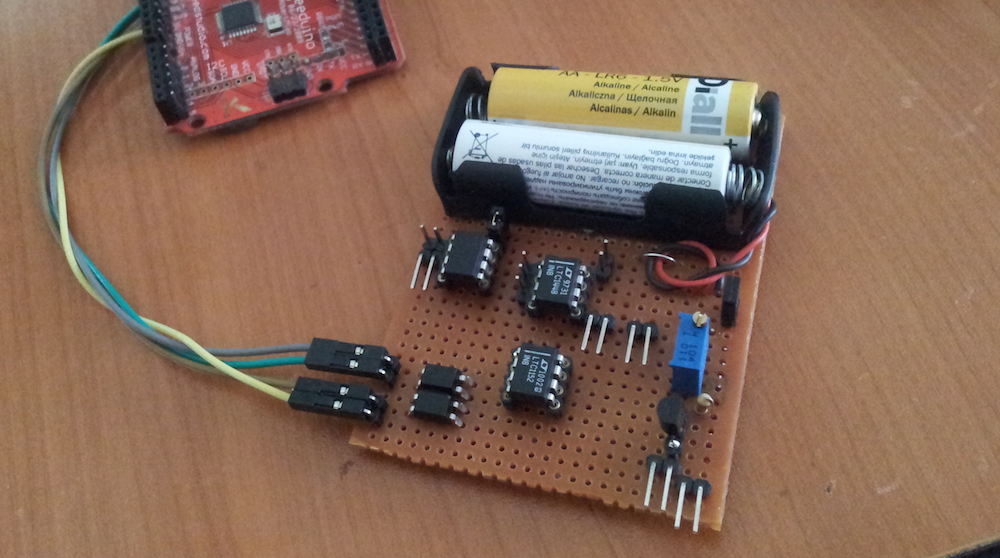Adjustable DC voltage/current source
21 May 2015
Hi all,
I’ve recently built an adjustable voltage and current source to test various hardware I build. Normally I was using a potentiometer to generate an adjustable voltage when I need but having a dedicated tool for the job seemed better.

I build this device by utilising a microcontroller, D/A converter, an op-amp + NPN transistor for constant current source and finally two optocouplers for serial communication.
 R3: 1k
R3: 1k
For the D/A converter, I used LTC1448 12bit DAC. It is relatively expensive for such a build but I had this IC as a sample for couple of years; therefore price wasn’t an issue. Moreover, since the battery voltage will vary with the milage and you can’t know the voltage value precisely I used an LM4040 zener reference to generate 2048 mV to the DAC. Therefore 1 LSB of the DAC output will correspond to 0.5 mV.

DAC has two channels and I used the second channel as constant current source. R1 is just there to limit the base current of the NPN transistor. Constant current is calculated as set_voltage/R2. I used 100 ohms for R1, and (10kohm fixed // 100kohm trimpot) as an R2. Trimpot is used to fine tune the output current. For op-amp I used a LTC1152 which can work down to 2.7 volts but it is not the greatest low-power op-amp with 3mA supply current. However, the op-amp is choper stabilised therefore it has very little low frequency noise which is useful for such application.

I used Attiny85 for microcontroller. Nothing specific about it, you can find the firmware here. I used Elm-Chan’s software serial library for basic I/O functionallity. I can set the voltage values over opto-isolated 9600 baud serial link and store them inside the microcontroller’s EEPROM.
 R1: 4.7kohm R2: 470ohm R3: 470ohm R4: 4.7kohm
R1: 4.7kohm R2: 470ohm R3: 470ohm R4: 4.7kohm
When power-up, microcontroller sets initial values to DAC, therefore I don’t need to configure the system each time I use. Also since I used optocouplers for isolation, I needed to invert TX & RX signals inside the firmware.
In conclusion,
System is not that accurate due to various reasons (small inaccuracy of the voltage reference, DC offset of the DAC and etc.) but it is highly stable. When I want to set the voltage channel to 250mV, I get around 250.45 mV of stable voltage out of it, which is enough for my needs.

Also for a much better adjustable voltage reference build, you can check Linear Technology App note 86 called A Standards Lab Grade 20-Bit DAC with 0.1ppm/°C Drift
ihsan.